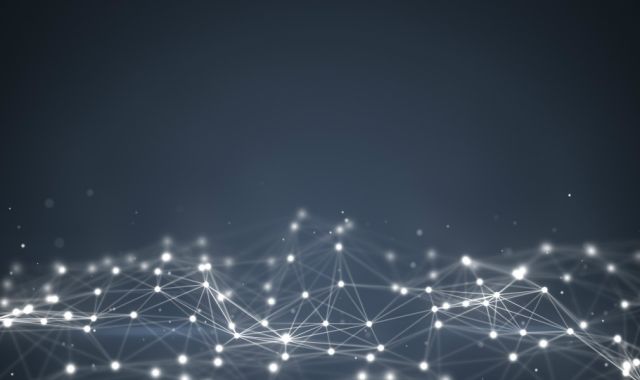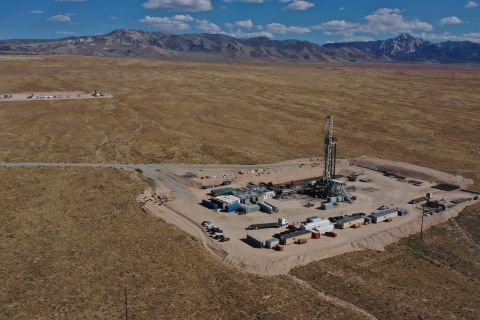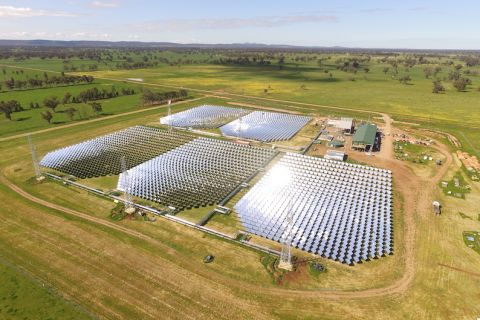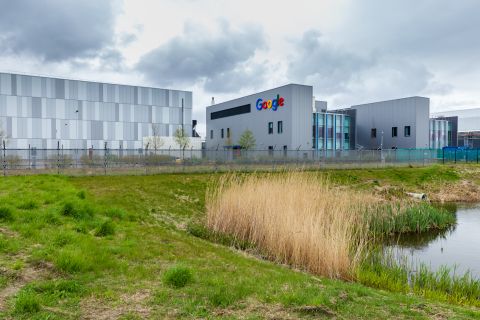
The connected world, created by the Internet of Things (IoT), is having a significant impact. It’s changing industries, like retail, health care, hospitality—and energy. IoT is a network of physical objects—communi- cations devices, vehicles, buildings and other items—that are embedded with electronics, software, sensors and net- work connectivity, which enables these objects to collect and exchange data.
IoT has become one of the fastest-growing technology trends as it lets machines talk with back-end systems and work together in near real time. As a result, businesses get new insight into their operations and can achieve a greater degree of efficiency and flexibil- ity that can build profitability.
IoT In Midstream
The midstream sector of oil and gas can benefit from IoT in many ways. It can increase efficiencies, save costs, improve worker safety and help reduce environmental hazards. There are many economic pressures in this industry today. That’s why it’s imperative to take a deeper look at how emerging technolo- gies can transform the midstream sector.
For example, companies can con- nect and monitor assets from virtually anywhere with IoT solutions. Remote monitoring brings power, connectivity, and sensors together in order to expand asset visibility.
First, let’s take a look at connectiv- ity. Many midstream businesses work in remote areas where good coverage is critical. However, we are seeing a lot of change on this front. New com- munications tools are arriving in the market. Cellular coverage is now more portable. Sharing satellite backhaul can cut costs. Wireless canopies, mesh technologies, even vehicle-based hotspots, are extending coverage. The key to choosing the right device or sensor suite is to determine which assets are being monitored, and how.
A device can use several radios to connect over multiple networks, like sat- ellite, cellular and Wi-Fi. Many devices are available that can remotely monitor and control systems. To pick the right device, consider the environment, what’s being monitored and available power options. At AT&T, we have more than 2,200 cellular devices already certified for use on our network.
Asset Monitoring
Assets with an embedded global sub- scriber identity module (SIM) can relay data to apps on mobile devices around the world. Management can receive alerts when there are leaks, changes in environmental conditions, flare-ups in transportation, field workers in danger and more. With this technology, users have more control of monitoring the asset. Managers can do more than sim- ply gather information on conditions. They can also set parameters on assets based on the environment.
For example, managers can make sure the asset stays at the ideal tem- perature. The right tools can take remote monitoring to the next level. It’s clear that there is a paradigm shift at work. Pervasive networks and connec- tivity not only permit monitoring, but also allow dynamic control capabilities, situational awareness and actionable work orders that can be delivered to a mobile workforce.
With IoT technology, managers and field workers can monitor and receive data on equipment in the field from their computers, tablets or smartphones. In the past, they might have sent employees to manually check on equipment multiple times a day. With IoT, they don’t need to be on-site to check on assets as often. They can remotely monitor pipelines for leaks and large spills, or check the status of floating roof tanks, rigs, wellheads, rail- cars, trucks and more.
This technology leads to a more effi- cient way of doing business. For example, imagine that with an IoT solution an alert goes off if water or air enters a floating roof tank containing chemicals that are hazardous when mixed with these elements. With this actionable information, the manager can immedi- ately respond to the issue and continue to get real-time reports on conditions.
Finding Risks
Similarly, remote monitoring can expose potential risks by detecting leaks early on. With the low cost of connec- tivity and cutting edge intelligence, such systems could not only detect leaks early on, but could even be designed to take action without human interven- tion. This technology can save valuable resources and help mitigate environ- mental impact.
How is this different from what’s being done today?
Operators have used systems to monitor pipelines for a while. They alert personnel when a problem occurs but cannot shut down the system automatically. A field worker needs to be dispatched to manually address the problem. Now IoT can notify personnel when there’s an issue. Moreover, IoT systems can be used to shut down the valve, giving control and analytics in real time. Managers can use IoT solutions to view a video feed from their IoT appli- cation, allowing them to visually check on the shut-down or change so the human oversight is not lost.
Environmental Benefits
IoT solutions can be used to alert personnel before conditions become hazardous and threaten the asset, community or natural habitat. They can be used to stop leaks in pipelines immediately, or get alerts from floating roof tanks when there’s a potentially unsafe condition. We need to explore the potential of IoT in terms of preven- tion—not just reaction—to changing environmental conditions.
Think about the inspection rates in business. We monitor and manage some elements in real time. But there are other pieces of equipment that we inspect daily or weekly. The more crit- ical an asset or process, the higher the monitoring frequency becomes. The frequency of inspection is a potential benefit of IoT.
Think about assets that need to be manually inspected every four hours. If that asset was wirelessly connected, it could be monitored constantly and would send alerts as needed.
Camera Systems
Another form of remote monitoring that can help midstream operations is connected camera systems. Cellular- connected camera systems can be used to monitor flare-off systems. This can be used to help maintain optimal flame characteristics, control pressure valves or shut a system down in an emergency. Combining image analysis with better quality video image compression can allow remote users to see and control flaring operations over any connectivity technology. They could then adjust con- trols through an app on their device.
Companies can place IoT-connected cameras at unmanned trucking termi- nals to make sure drivers and vehicles are in compliance and following safety standards. Solutions like SolarBeam Wireless Perimeter Security provide an affordable first line of defense.
IoT cameras can act as a security sys- tem to protect property or infrastructure. The assets often need to be protected in harsh environments without power or wired communications. SolarBeam is an active, layered, infrared pulsed beam fence that creates a highly secure perim- eter. Companies can create standalone or integrated electronic fences to protect perimeters, and customize them to meet environmental issues.
Alarms can be set to only be triggered if all beams in the array break simultaneously, limiting false positives. Managers can also verify a break with video. All of these com- munications and data can be carried over AT&T’s LTE cellular network. It’s an efficient and affordable way for midstream operations to monitor safety and protect assets. It’s particularly helpful for anti-theft. It can cover large areas, is easy to maintain, works in all conditions and is durable.
Worker Safety
IoT’s benefits in the energy sector go beyond helping businesses be more efficient and cutting costs. Wearables, a form of IoT, can boost worker safety. This technology has great potential to impact the midstream market.
For example, we created a custom solution for a large integrated energy company. The company needed a way to monitor employees who work alone in the field and they wanted it to be both active and reactive. We worked with them on a solution that monitors workers for lack of motion (reactively flagging a problem) and lets them press a panic button to actively call for help.
We brought several tools together to make this happen. The solution is a wearable pendant, with 900 MHz cellu- lar and satellite radio. This IoT solution helps reduce the risk to field workers, since the client can respond to issues in remote locations more quickly.
There’s potential to evolve this ability even further. For example, personal sen- sor networks could be created to mon- itor and track workers’ vital stats, such as heartbeat and pulse, activity level and body temperature. That would bring awareness of problems with health and safety to concerned parties instantly. Such sensors could also let workers know if they are at risk, entering sensitive areas or even crossing into restricted safety zones.
Companies could design programs to respond instantly to incidents as they happen—or even as they are about to happen—based on predictive analytics. Emerging wearable display technology can overlay information into the field of vision to let businesses work faster, share information, and warn workers of prob- lems. By connecting such a wearable sensor network to an intelligent, cloud- based storage and processing facility, the users could build rules and policies to help lower risks.
IoT can transform midstream operations in many ways. It can give companies more insight and control over valuable assets. It can better mobi- lize the workforce and make it more efficient. Management personnel can be on the road running their business while inspecting crucial assets remotely using IoT solutions. Field workers won’t need to constantly check on assets that are running smoothly. Instead, they can focus their energy on other aspects of the business, becoming more productive.
Andrew Hebert is associate vice president of energy business solutions for AT&T.
Recommended Reading
US Geothermal Sector Gears Up for Commercial Liftoff
2024-04-17 - Experts from the U.S. Department of Energy discuss geothermal energy’s potential following the release of the liftoff report.
Oil, Gas Drilling Tech Transfer Boosts Fervo’s Geothermal Prowess
2024-02-14 - Geothermal company Fervo Energy is learning from oil and gas drilling and completion techniques to improve geothermal well costs and drill times.
Could Concentrated Solar Power Be an Energy Storage Gamechanger?
2024-03-27 - Vast Energy CEO Craig Wood shares insight on concentrated solar power and its role in energy storage and green fuels.
Amid ‘Battery Arms Race,’ Xerion CEO Talks Tech, Maturing Market, China
2024-04-10 - The late-stage battery startup is active in the military and electronics space, but is gaining attention for technology that extracts lithium from geothermal brine.
Google Exec: More Collaboration Needed for Clean Power
2024-04-17 - Tech giant Google has partnered with its peers and several renewable energy companies, including startups, to ramp up the presence of renewables on the grid.





